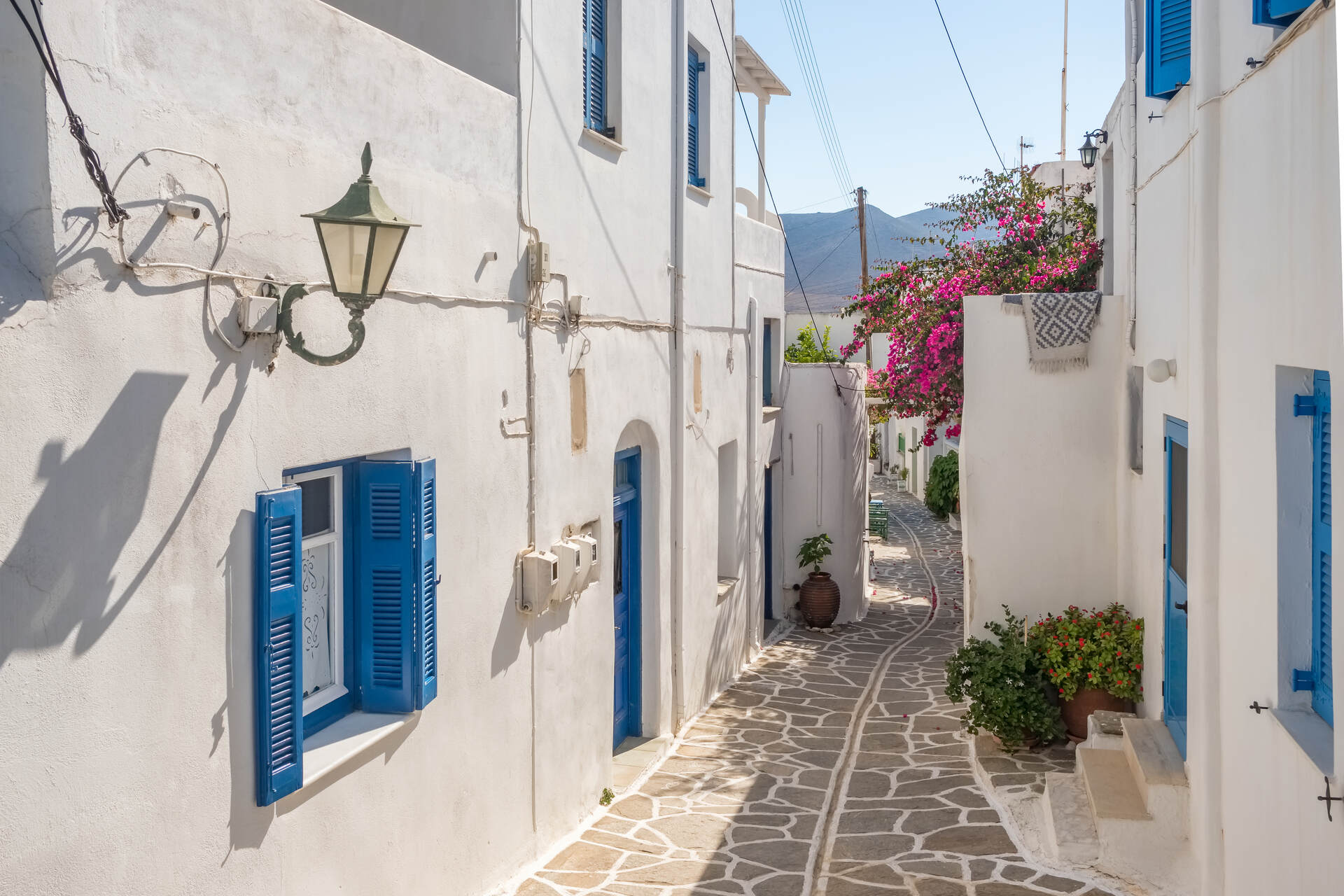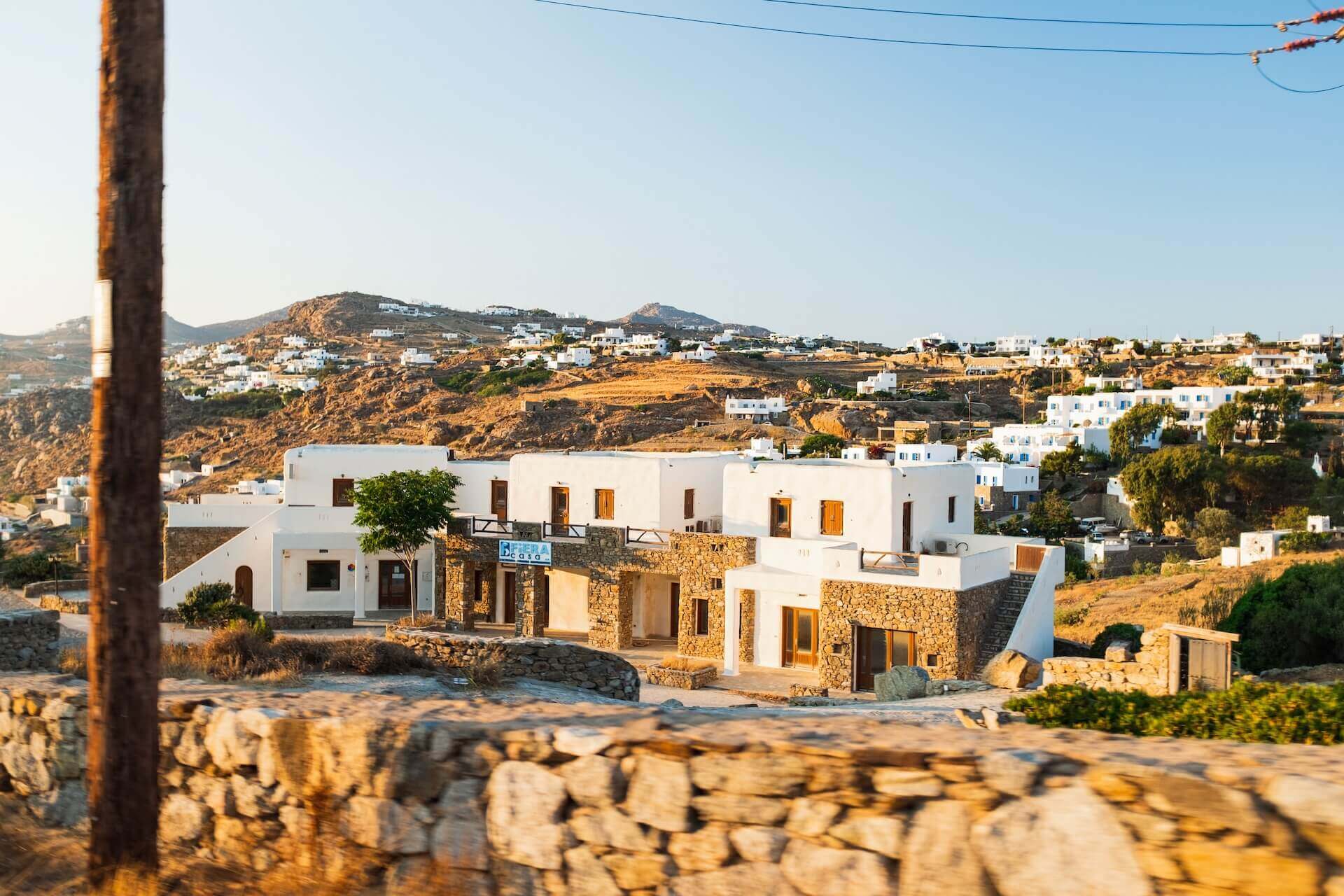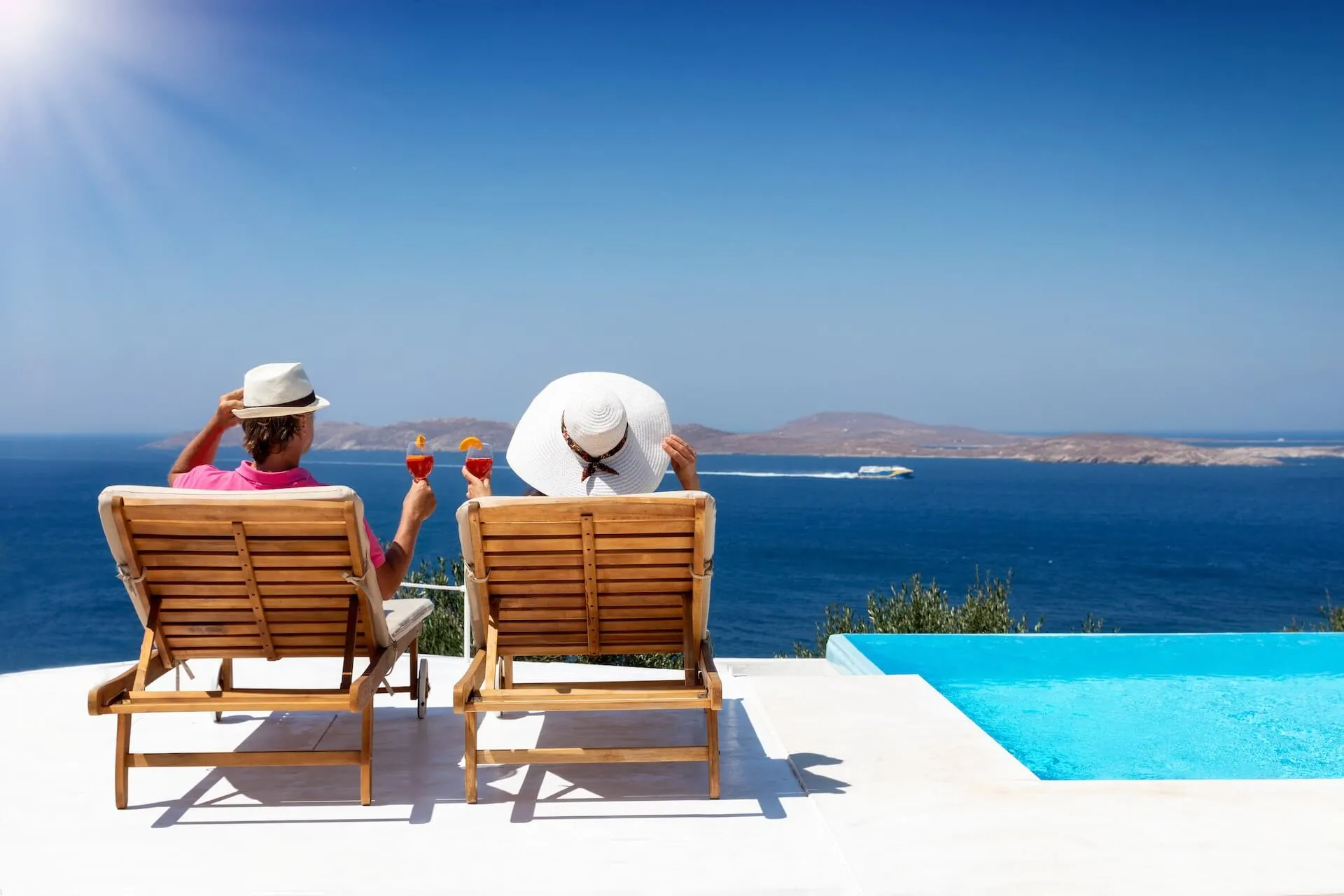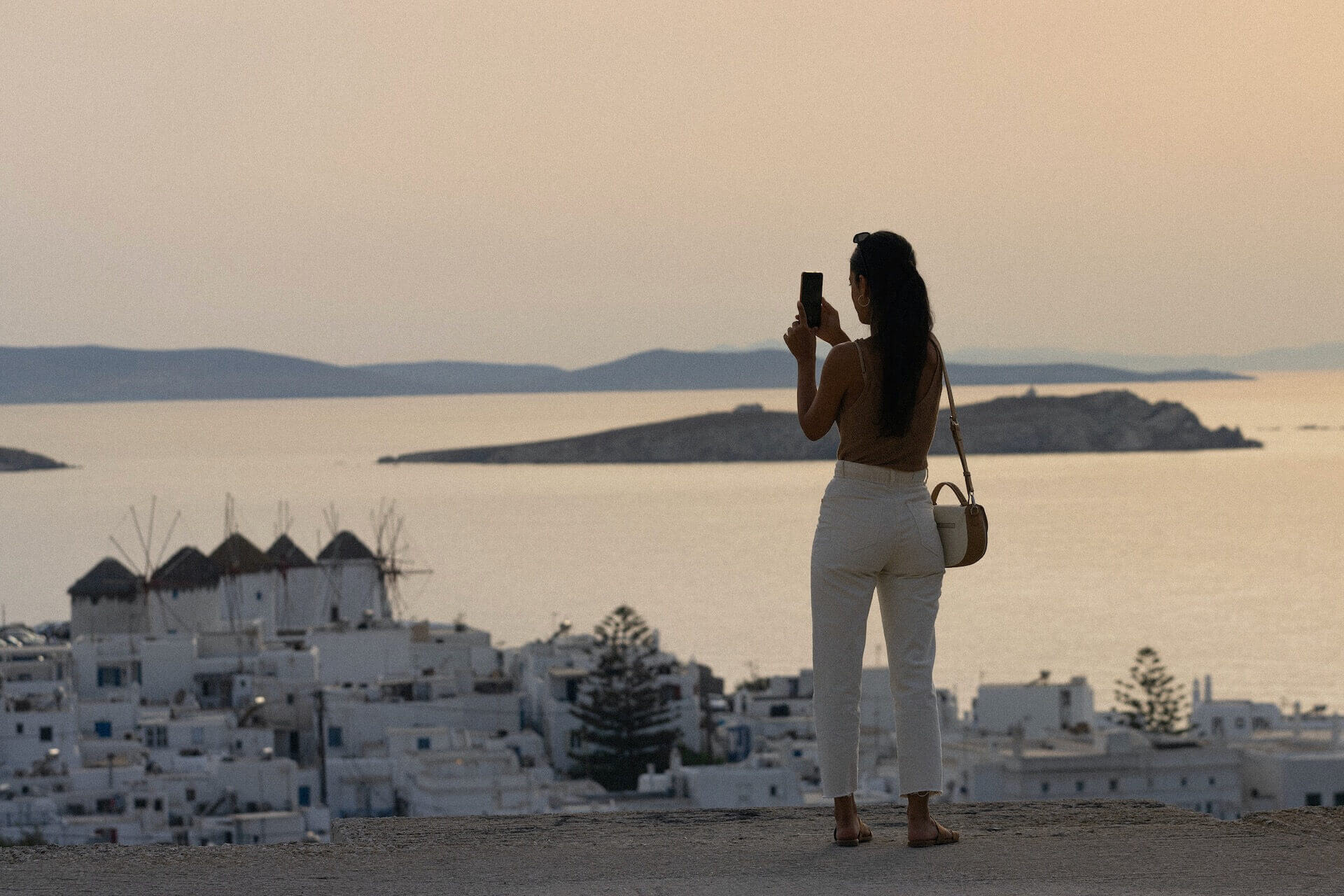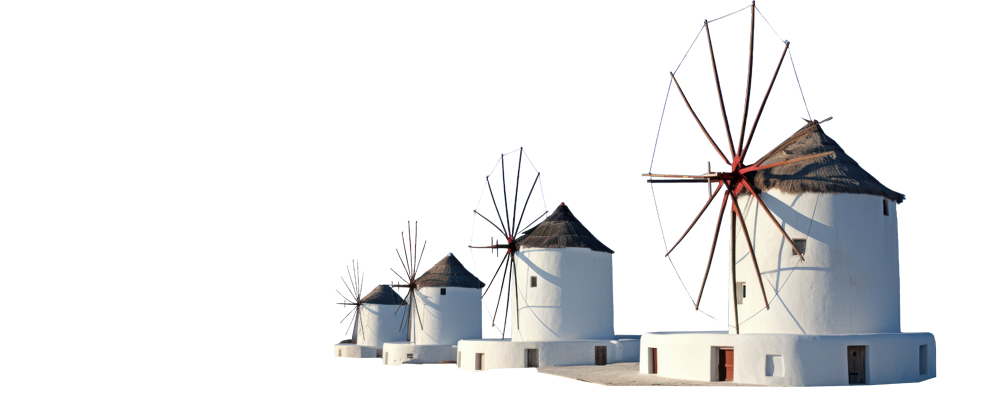Greek islands are extremely popular and very distinctive destinations. As soon as you look at a picture and see white and blue buildings, you know the shot was taken somewhere in sunny Greece, most likely The Island of the Winds or Santorini. But why is everything white in Mykonos? Is there some history and logic behind it, or is it purely to look pretty and attract tourists?
Some of the Greek Islands Are Very Popular for Their Unique Architecture and Whitewashed Houses
It’s no secret that islands in Greece are some of the most popular destinations in the world, especially the Cycladic group of islands. Besides the gorgeous beaches and amazing Greek food, there is another reason why they keep attracting tourists from all over the world.
It’s the specific architecture of Greek islands in this part of the Aegean Sea. Each island looks like it came out of a dream. Everything is gorgeous and packed with houses painted in white, with beautiful, deep blue accents popping up.
The Island of the Winds Is One of the Most Popular Greek Islands
Mykonos is known as the most popular island in Greece, without a doubt. This party island is a real treat for the eyes, as it best represents the classic white-and-blue architecture the Greeks put so much work into. Over half a million people come to see all the beautiful attractions and hidden gems this picturesque place has to offer, so it’s no wonder it’s one of the most Instagrammable places in the world.
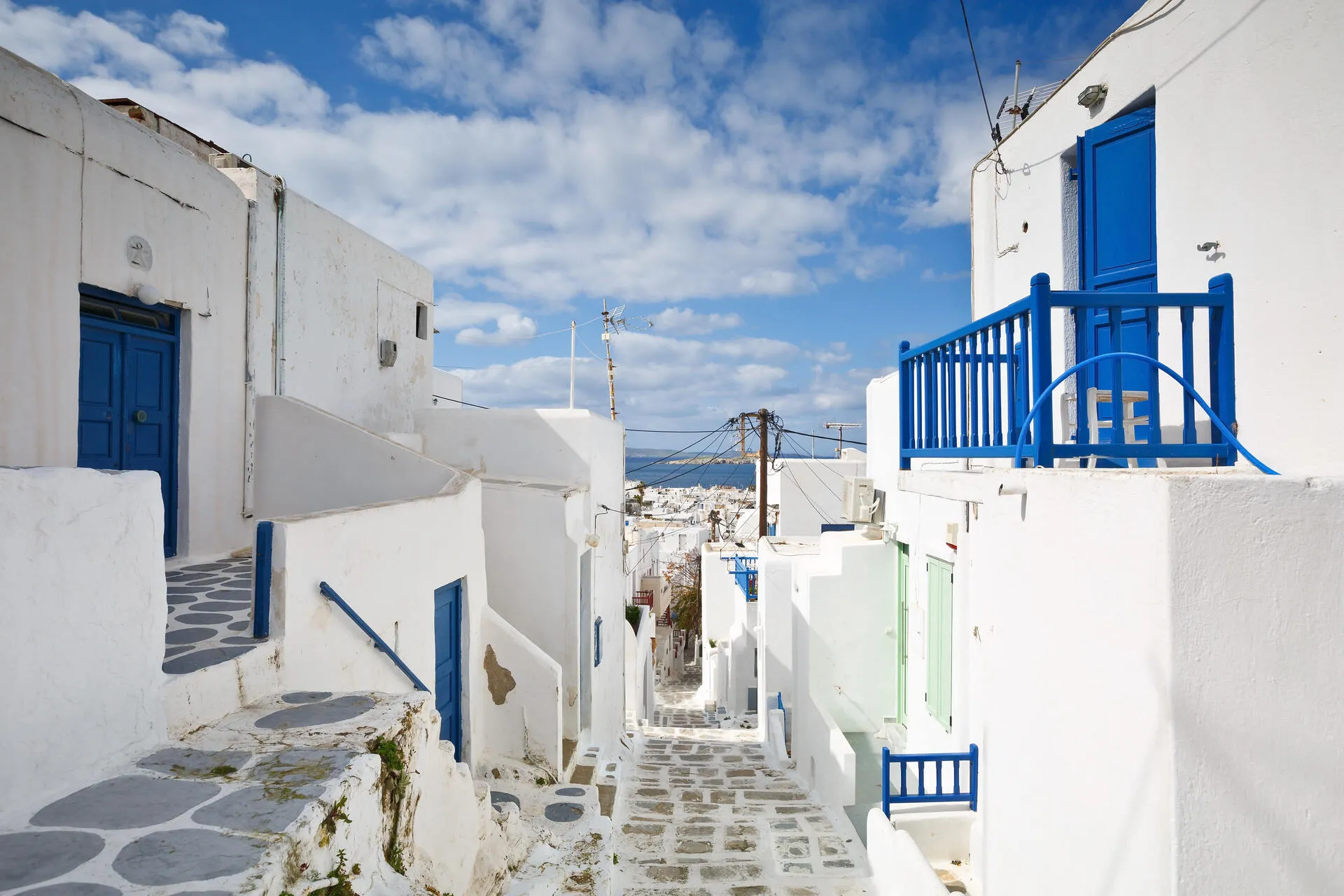
The picturesque streets make it one of the most photographed places in the world
Here’s the Solved Mystery of Why Is Everything White in Mykonos
Most people believe that the distinctive white and blue colors that have become synonymous with some Greek islands are there purely for aesthetic purposes. While the specific look of the islands is the first thing that attracts millions of tourists every year, the story behind the now well-known Greek architecture is a bit more interesting.
Houses in Mykonos, Greece, Were Originally Dark in Color and Then Painted White to Cancel Out Some of the Heat
Even though the story of how the natives of this beautiful island had a theme in mind and wanted to build an all-white-and-blue island from the start sounds pretty sweet, you should know it’s not true. At the very beginning of the construction of these gorgeous small houses on The Island of the Winds, many centuries ago, the natives had only one thought in mind – practicality.
The houses weren’t very tall, and they were made out of stone. In such rocky terrain, wood was expensive and difficult to get a hold of, and stone was more accessible. There was only one problem – the stone was dark in color, meaning it would attract more sunlight and heat. That was a very big problem because summers in Greece would get incredibly hot, to the point where staying in one of those houses would be like staying in a sauna.
That’s why the residents thought of painting the walls of their houses white, to reflect some of the sunlight and cool down the house. Another advantage of using whitewash was that it was very cheap and easy to get a hold of. You could make one yourself simply by mixing water, salt, and limestone, and in a time of such poverty, that was very useful.
Why Were the Blue Accents Added?
If you visit Mykonos and take a walk along the streets of the Old Town, you will see the Cycladic architecture in its full glory, and you will notice that in the sea of whitewashed buildings, you can spot a pop of color every now and then. Every door and window frame were painted in blue color, and once again, there is a story behind it.
Fishermen used bright blue paint on their boats, as it was the cheapest and most accessible option, and they would use the leftover blue paint for their houses as well. The blue color was very easy to make – it was a mixture of whitewash and a specific cleaning product in the form of a blue powder called “loulaki,” which every household had at the time.
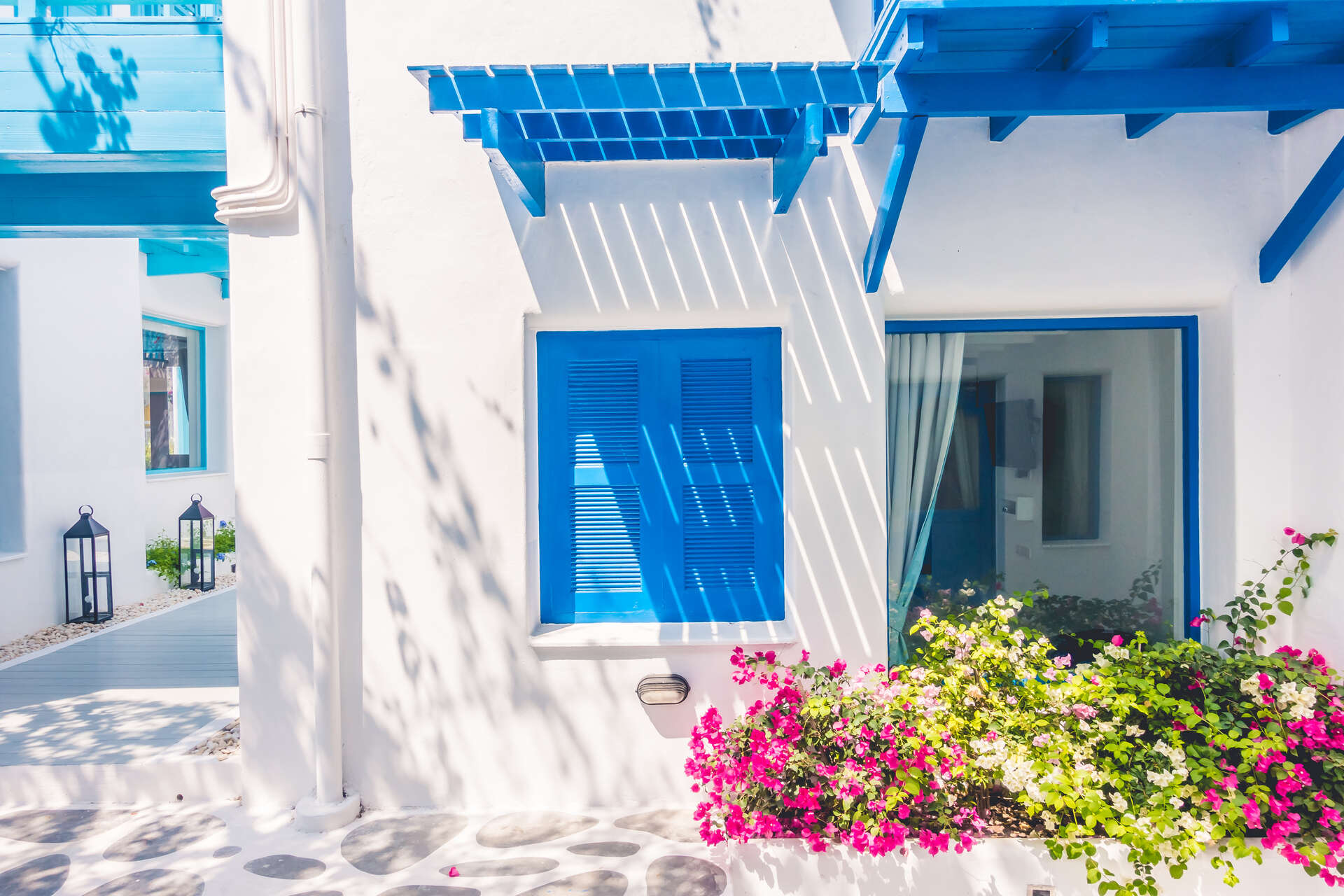
The bright blue was made out of whitewash and a cleaning product
The Paint Was Used to Protect People Against Cholera
During the cholera outbreak in 1938, the government stated that it was mandatory to paint all houses in whitewash. It might sound silly that paint was used to fight a powerful disease, but the whitewash they made contained limestone, a very strong disinfectant. So, people began painting as a way to sanitize their homes and stop the pandemic from spreading.
At One Point, the Color Scheme Was Mandated by Law
Believe it or not, painting a house in any color other than white or blue was illegal on Greek islands at one point. During the military dictatorship in Greece in 1967, the iconic color scheme was no longer optional – it was a mandatory policy.
Even a new law was issued in 1974, making it official. It was a way to promote nationalism and patriotism in the country, and here is how they are related: white and blue are the colors of the Greek flag. Even after the law was changed, locals continued the tradition of the specific color palette.
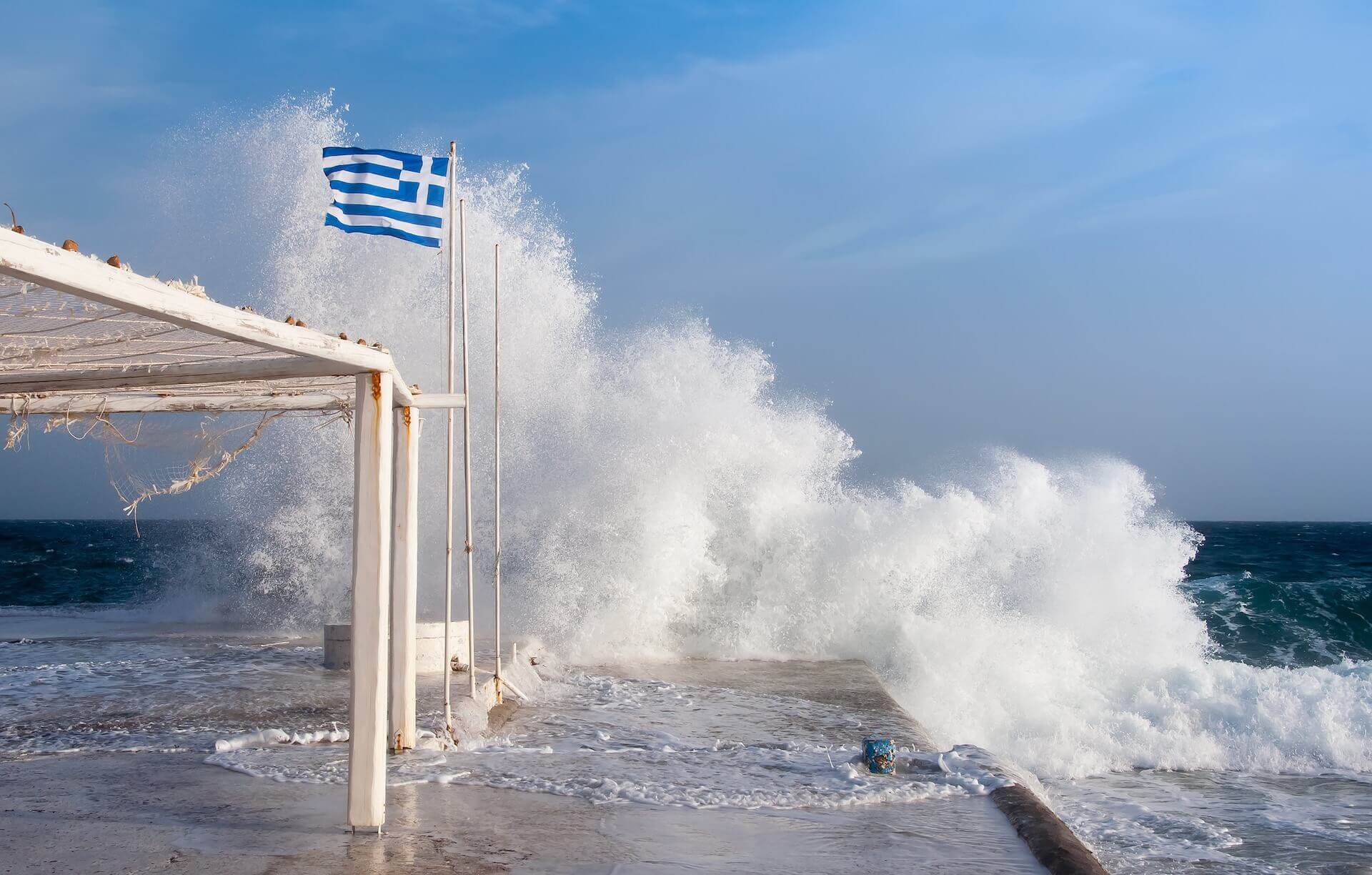
White and blue are the colors of the Greek flag
Contact The Ace VIP and Spend Your Summer in One of the Whitewashed Mykonos Villas for Rental in Sunny Greece
If you want to spend your summer in a little piece of white and blue paradise, you need to get your travel plans in order. Contact The Ace VIP and book one of the Mykonos luxury villas you like the most. Almost all of our private villas in Mykonos are built in classic Cycladic architecture, they are whitewashed and gorgeous.
They all offer all the amenities needed for a perfect vacation, and you will have a personal Mykonos concierge ready to help you out with any requests at any time. You can rent a car and explore all the beautiful buildings and amazing attractions on the island, and if you really want to understand the colors of the Greek flag, get a Mykonos yacht rental and watch as it leaves a white trail as you’re cruising the beautiful blue water of the Aegean Sea.

